The world is your oyster: Zaha Hadid's Salerno Terminal is inspired by the sea
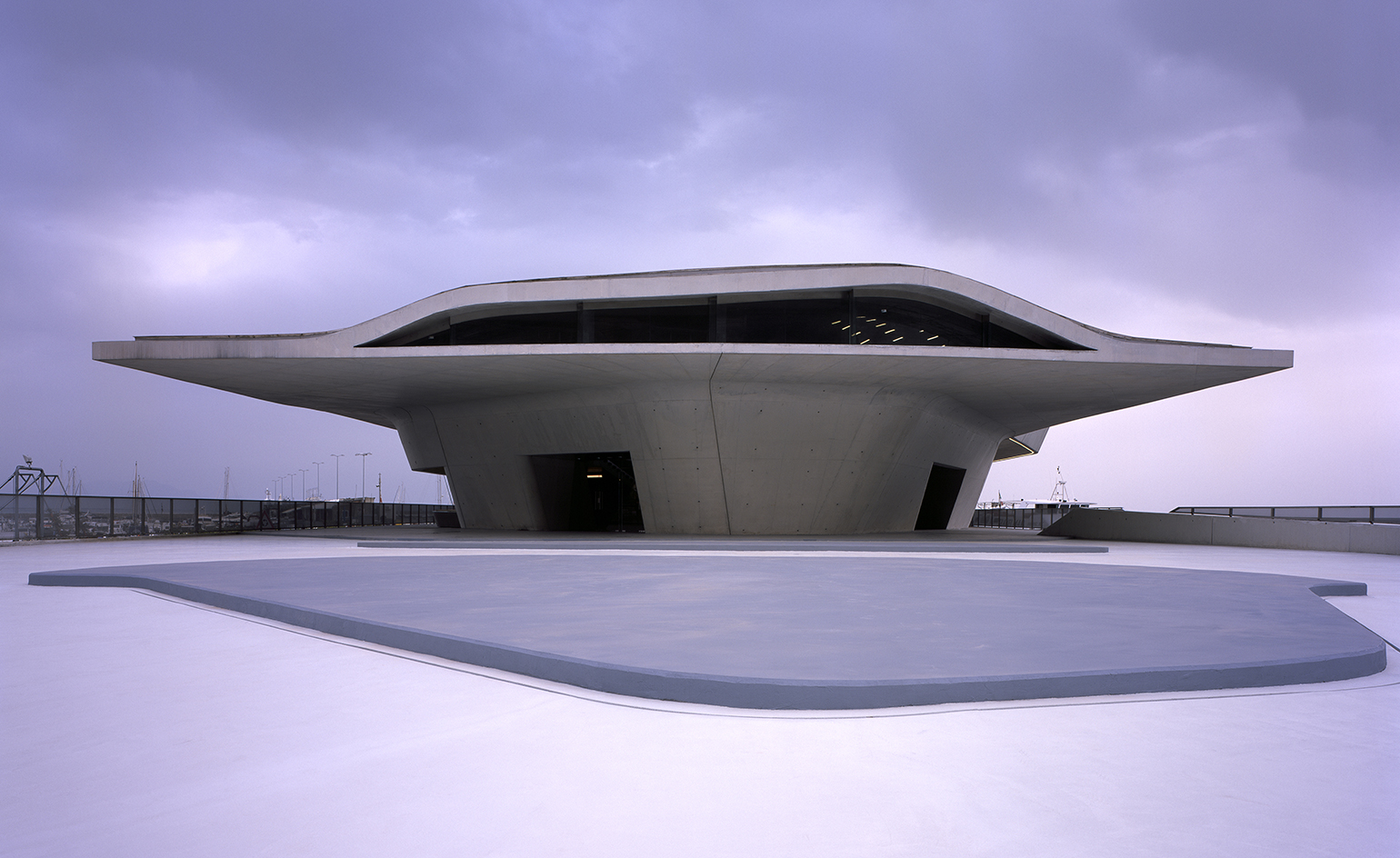
No proof was needed that Zaha Hadid's architectural legacy would live on to continue to inspire and amaze, and the office's latest completion – the new Salerno Maritime Terminal – is a case in point. The building, the first to be completed by the firm since the architect's untimely passing last month, has just been inaugurated in the Campania region of southern Italy.
The project was kick-started by then-mayor Vincenzo De Luca to aid the area's social, economic and environmental regeneration. The terminal was completed this month under the watchful eye of current mayor Vincenzo Napoli.
The building's hard, asymmetric concrete shell was designed to protect users from the region's hot sun during the popular summer vacation months. Its curvaceous form – a Hadid trademark – even takes its references from the sea, abstractly resembling an oyster.
The program inside is straightforward, containing administration offices for national border controls and shipping lines; a terminal for international ferries and cruise ships; and a separate terminal for local and regional ferries. Internal ramps criss-cross the building, enhancing connections between areas.
Its functionality and valuable contribution to the area's infrastructure – the terminal is set to increase arrivals of ferry and cruise ships by 500,000 additional passengers each year, creating new jobs – are matched by its views, which are nothing less than spectacular, spanning not just the blue Mediterranean Sea, but also the picturesque Amalfi Coast, the Gulf of Salerno and the Cilento.
The terminal's striking form is illuminated at night, acting as a beacon or lighthouse for the coastal town. 'The new terminal operates, both functionally and visually, as a smooth transition between land and sea,' explain the architects, 'a coastal land formation that mediates between solid and liquid.'
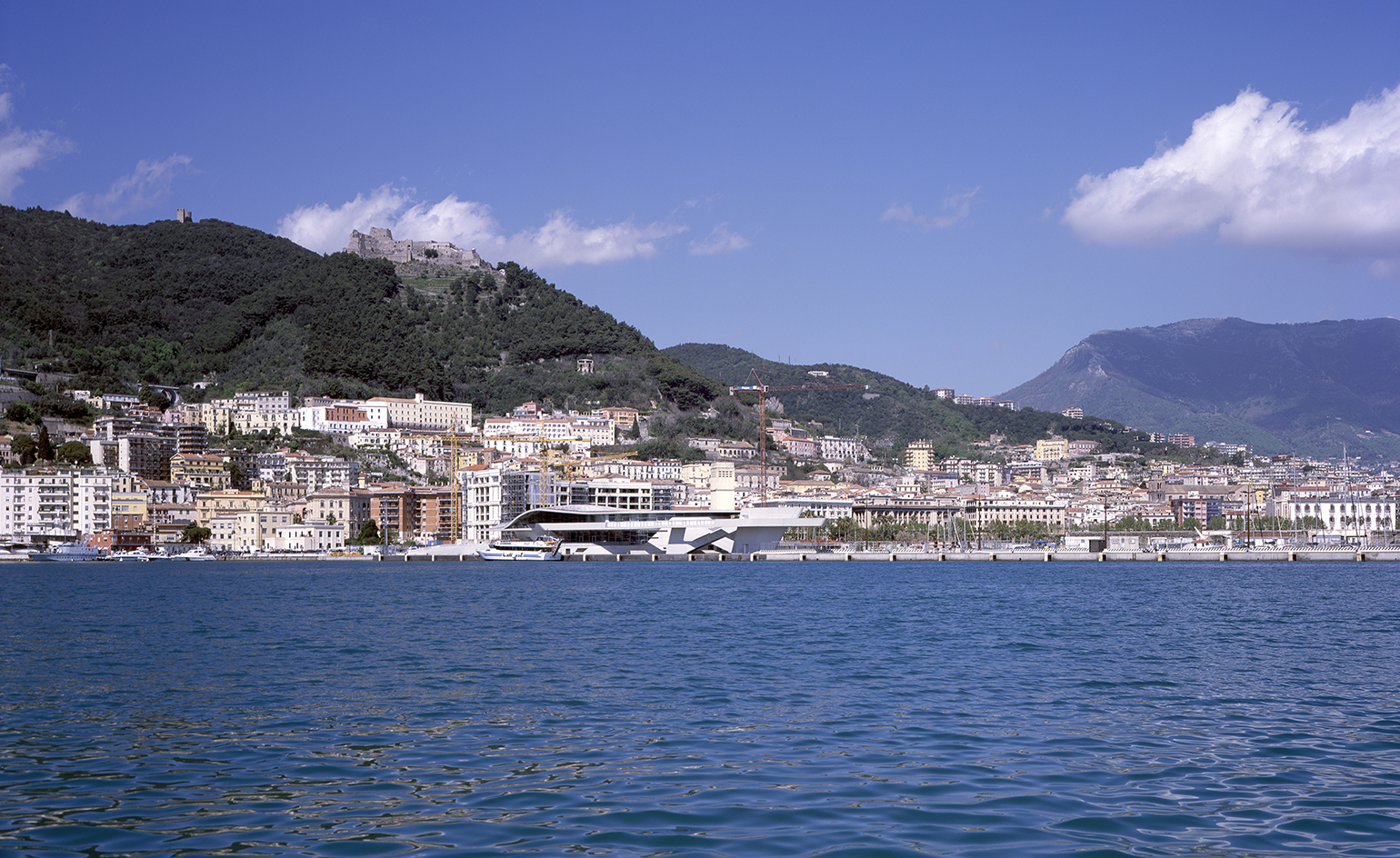
The project is meant to be a key piece in the area's social, economic and environmental regeneration
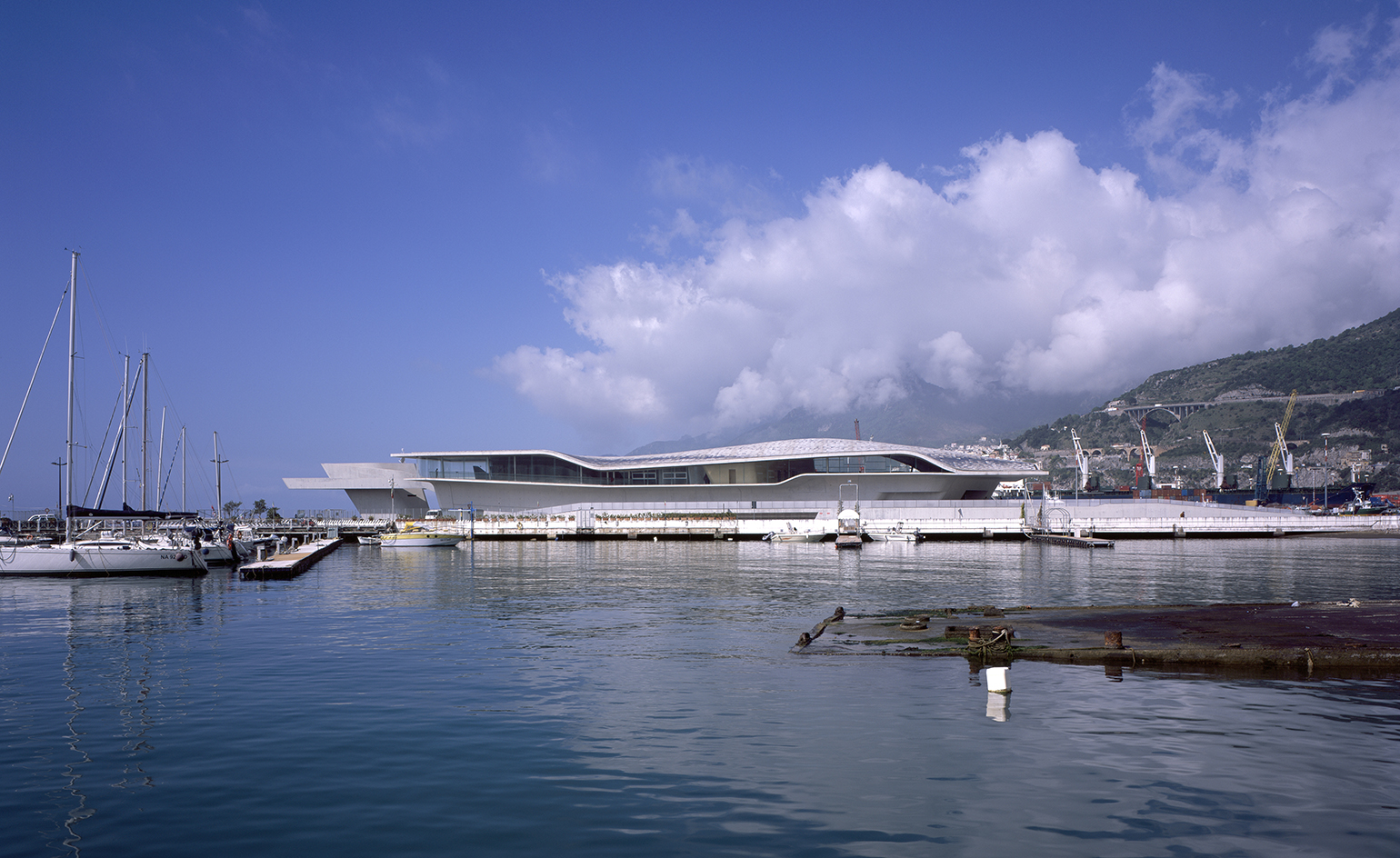
The Terminal will help increase the arrivals of ferries and cruise ships, which in turn will help create plenty of new jobs in the area
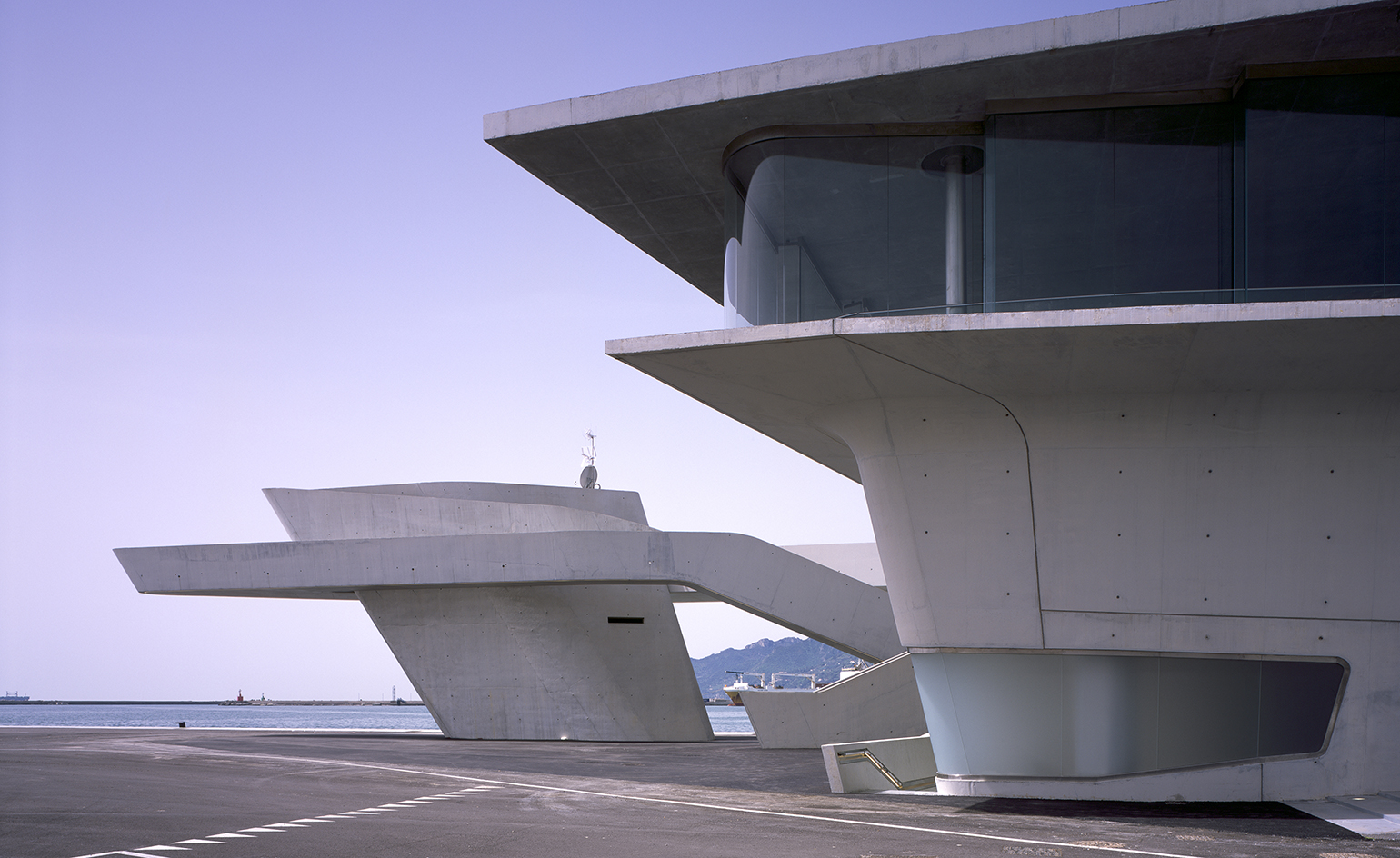
The project commenced way back in 1993; in 2000 Zaha Hadid Architects won the international competition to design it

Inside, the building houses offices as well as terminals for international and local ferries and cruise ships
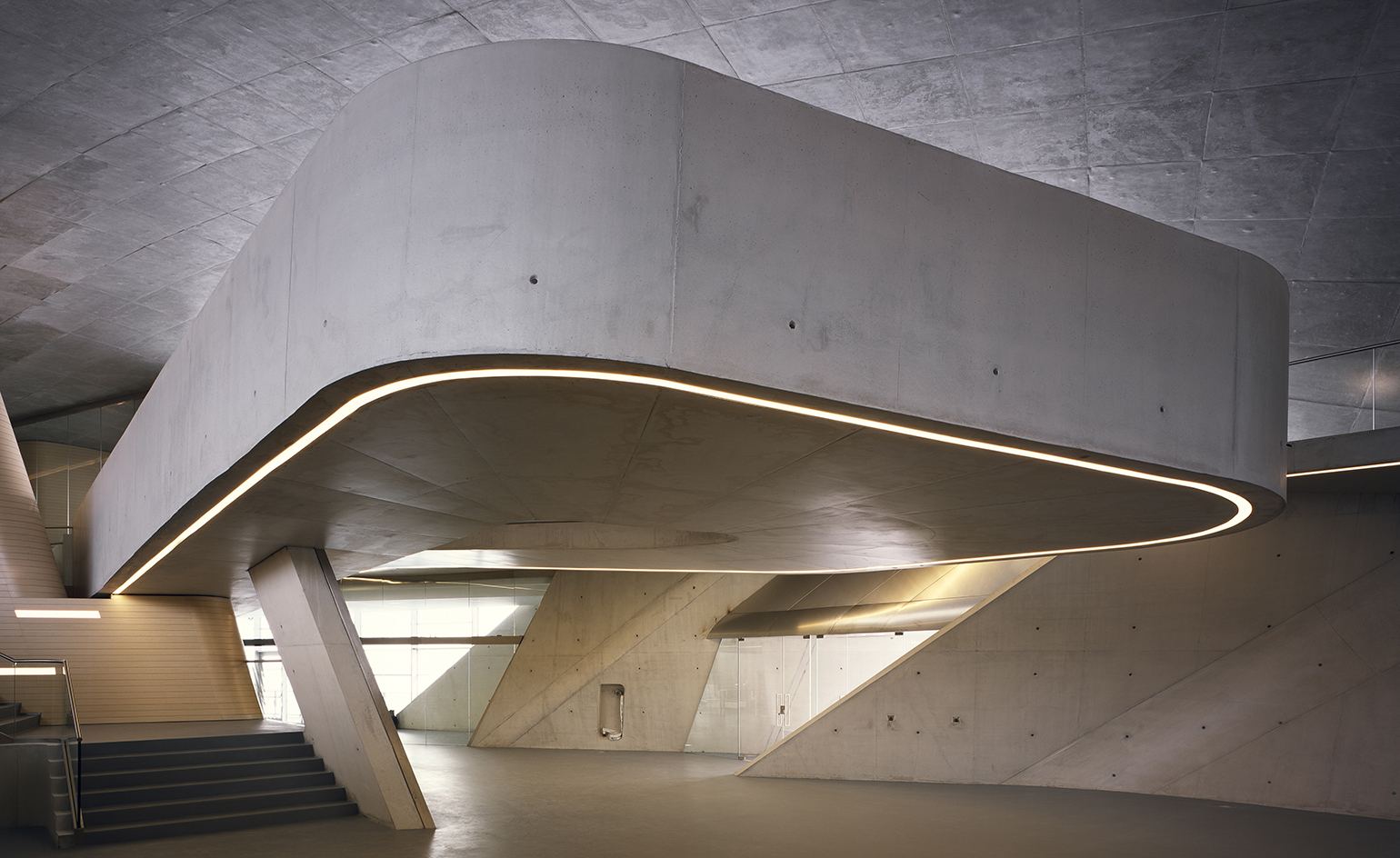
Smooth, undulating ramps link different areas within the terminal
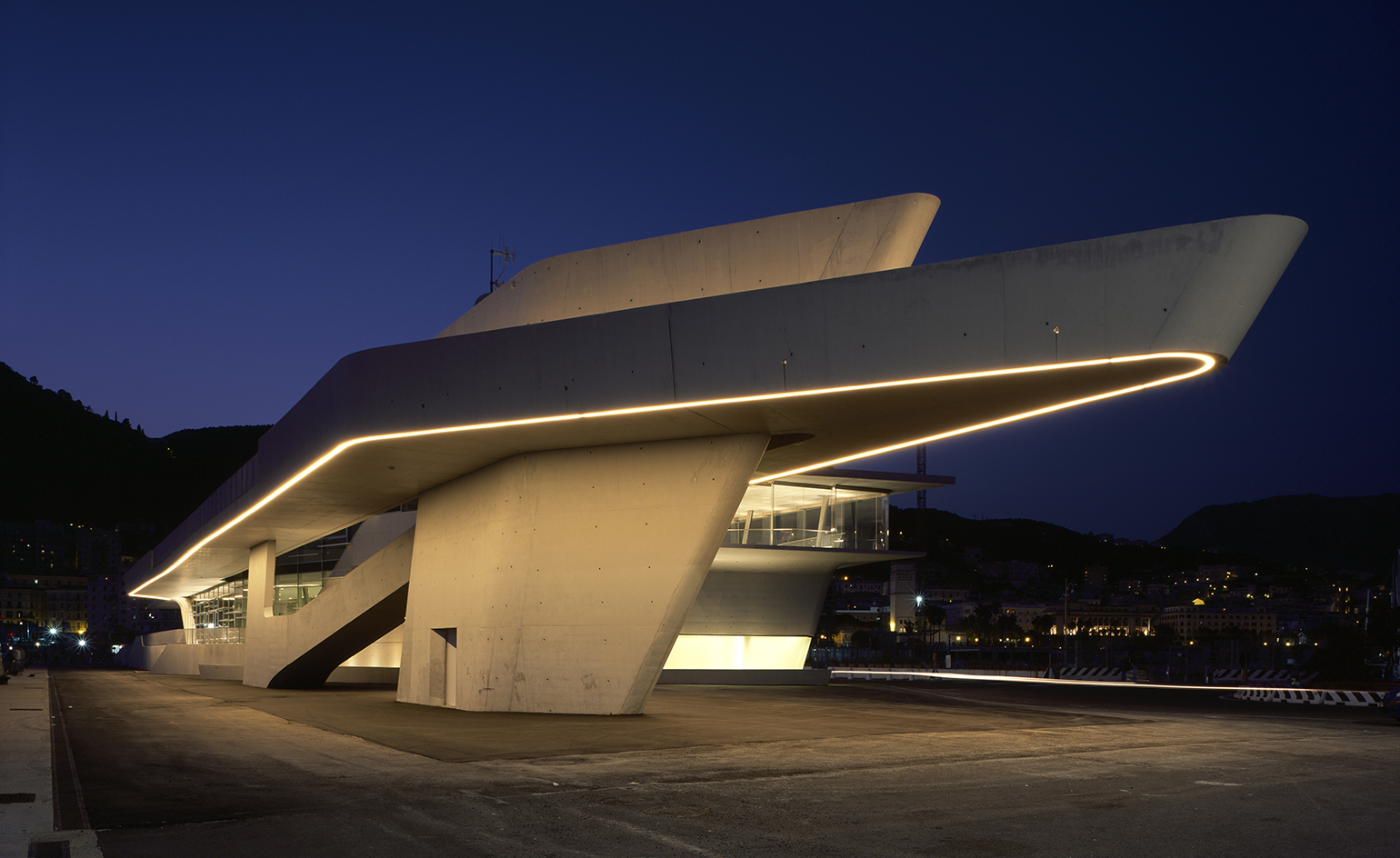
At night, the terminal is lit from within, acting as a lighthouse for the port
INFORMATION
For more information, visit the Zaha Hadid Architects website
Photography: Helen Binet
Receive our daily digest of inspiration, escapism and design stories from around the world direct to your inbox.
Ellie Stathaki is the Architecture & Environment Director at Wallpaper*. She trained as an architect at the Aristotle University of Thessaloniki in Greece and studied architectural history at the Bartlett in London. Now an established journalist, she has been a member of the Wallpaper* team since 2006, visiting buildings across the globe and interviewing leading architects such as Tadao Ando and Rem Koolhaas. Ellie has also taken part in judging panels, moderated events, curated shows and contributed in books, such as The Contemporary House (Thames & Hudson, 2018), Glenn Sestig Architecture Diary (2020) and House London (2022).
-
 The work of Salù Iwadi Studio reclaims African perspectives with a global outlook
The work of Salù Iwadi Studio reclaims African perspectives with a global outlookWallpaper* Future Icons: based between Lagos and Dakar, Toluwalase Rufai and Sandia Nassila of Salù Iwadi Studio are inspired by the improvisational nature of African contemporary design
-
 Top 25 houses of 2025, picked by architecture director Ellie Stathaki
Top 25 houses of 2025, picked by architecture director Ellie StathakiThis was a great year in residential design; Wallpaper's resident architecture expert Ellie Stathaki brings together the homes that got us talking
-
 Year in review: the shape of mobility to come in our list of the top 10 concept cars of 2025
Year in review: the shape of mobility to come in our list of the top 10 concept cars of 2025Concept cars remain hugely popular ways to stoke interest in innovation and future forms. Here are our ten best conceptual visions from 2025
-
 Modernist Palazzo Mondadori’s workspace gets a playful Carlo Ratti refresh
Modernist Palazzo Mondadori’s workspace gets a playful Carlo Ratti refreshArchitect Carlo Ratti reimagines the offices in Palazzo Mondadori, the seminal work by Brazilian master Oscar Niemeyer in Milan
-
 Wang Shu and Lu Wenyu to curate the 2027 Venice Architecture Biennale
Wang Shu and Lu Wenyu to curate the 2027 Venice Architecture BiennaleChinese architects Wang Shu and Lu Wenyu have been revealed as the curators of the 2027 Venice Architecture Biennale
-
 At the Holcim Foundation Forum and its Grand Prizes, sustainability is both urgent and hopeful
At the Holcim Foundation Forum and its Grand Prizes, sustainability is both urgent and hopefulThe Holcim Foundation Forum just took place in Venice, culminating in the announcement of the organisation's Grand Prizes, the projects especially honoured among 20 previously announced winning designs
-
 Carlo Ratti reflects on his bold Venice Architecture Biennale as it closes this weekend
Carlo Ratti reflects on his bold Venice Architecture Biennale as it closes this weekendThe Venice Architecture Biennale opens with excitement and fanfare every two years; as the 2025 edition draws to a close, we take stock with its curator Carlo Ratti and ask him, what next?
-
 Step inside Casa Moncler, the brand’s sustainable and highly creative Milanese HQ
Step inside Casa Moncler, the brand’s sustainable and highly creative Milanese HQCasa Moncler opens its doors in a masterfully reimagined Milanese industrial site, blending modern minimalism and heritage, courtesy of ACPV Architects Antonio Citterio Patricia Viel
-
 Aldo Frattini Bivouac is a mountain shelter, but not as you know it
Aldo Frattini Bivouac is a mountain shelter, but not as you know itA new mountain shelter on the northern Italian pre-Alp region of Val Seriana, Aldo Frattini Bivouac is an experimental and aesthetically rich, compact piece of architecture
-
 The 2026 Winter Olympics Village is complete. Take a look inside
The 2026 Winter Olympics Village is complete. Take a look insideAhead of the 2026 Winter Olympics, taking place in Milan in February, the new Olympic Village Plaza is set to be a bustling community hub, designed by Skidmore, Owings & Merrill
-
 A beautifully crafted concrete family house in a Mexican suburb is a contemplative oasis
A beautifully crafted concrete family house in a Mexican suburb is a contemplative oasisHW Studio have shaped a private house from raw concrete, eschewing Brutalist forms in favour of soft light, enclosed spaces and delicate geometries